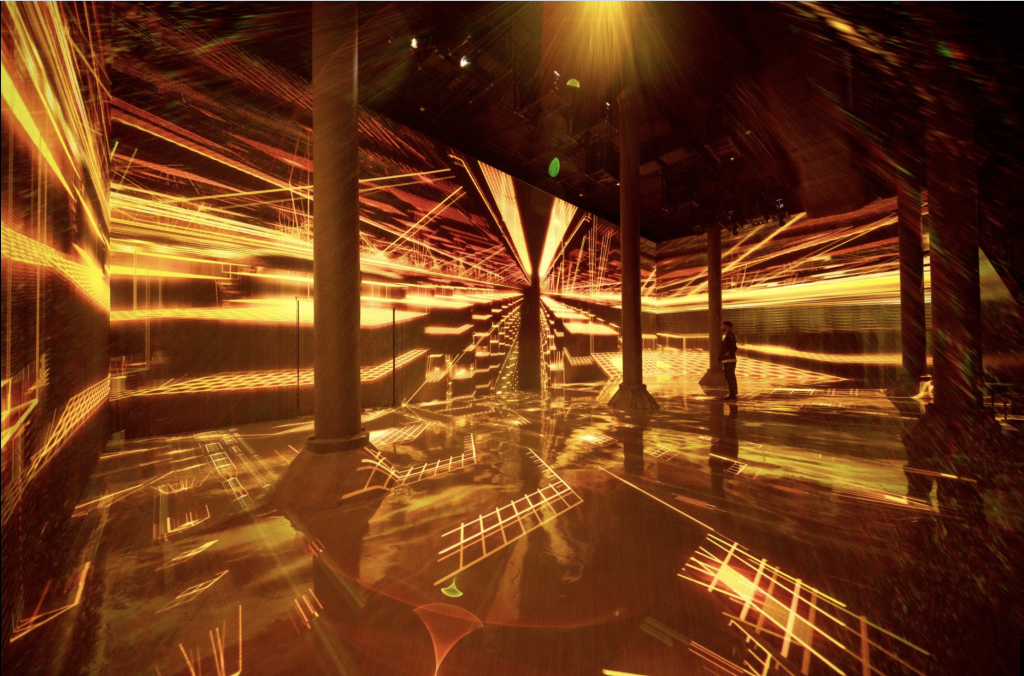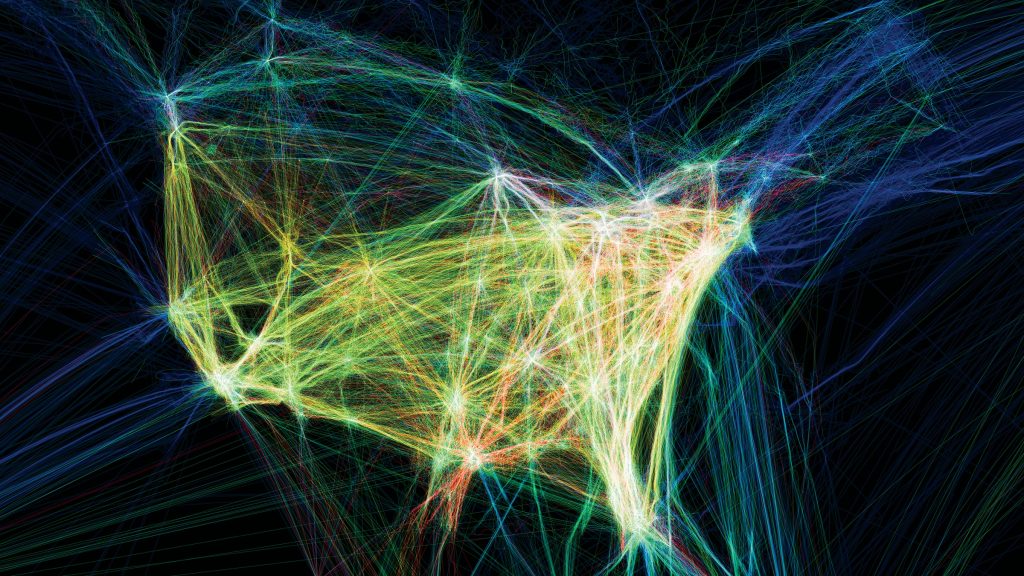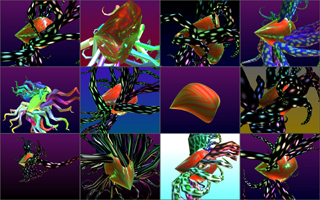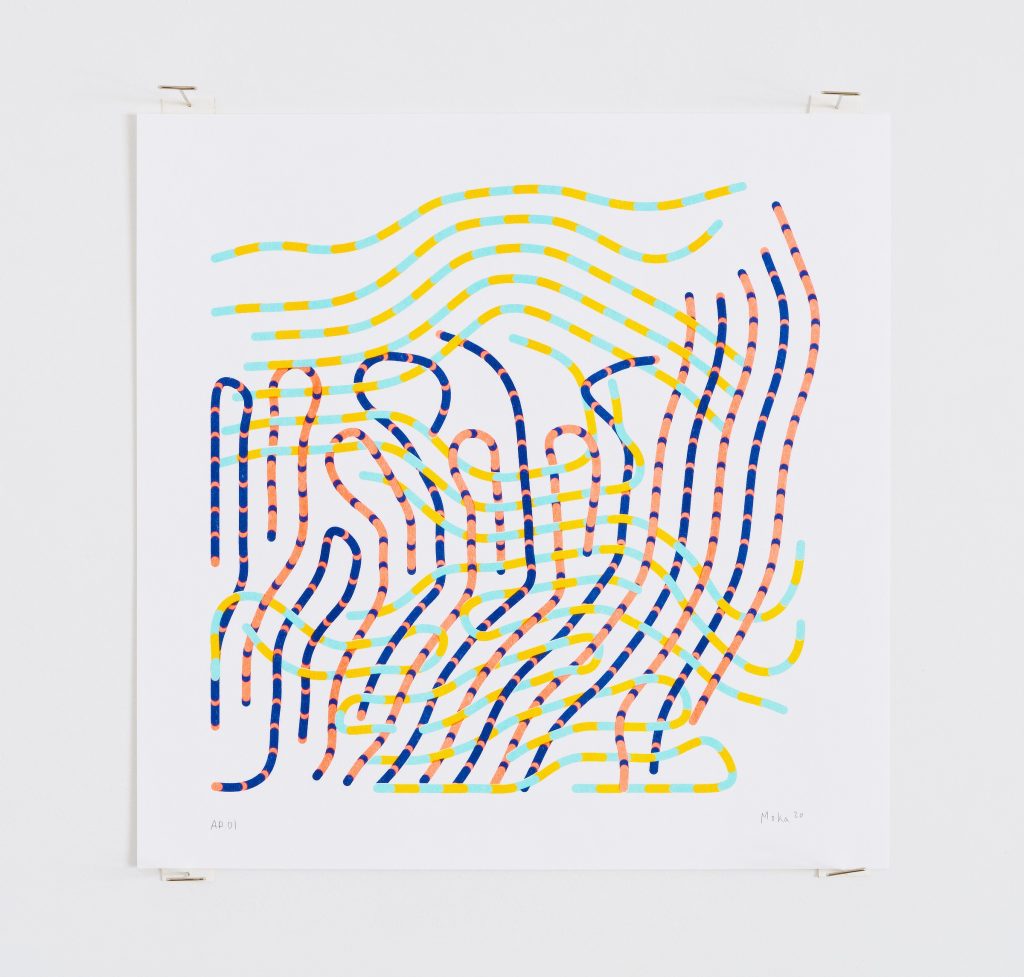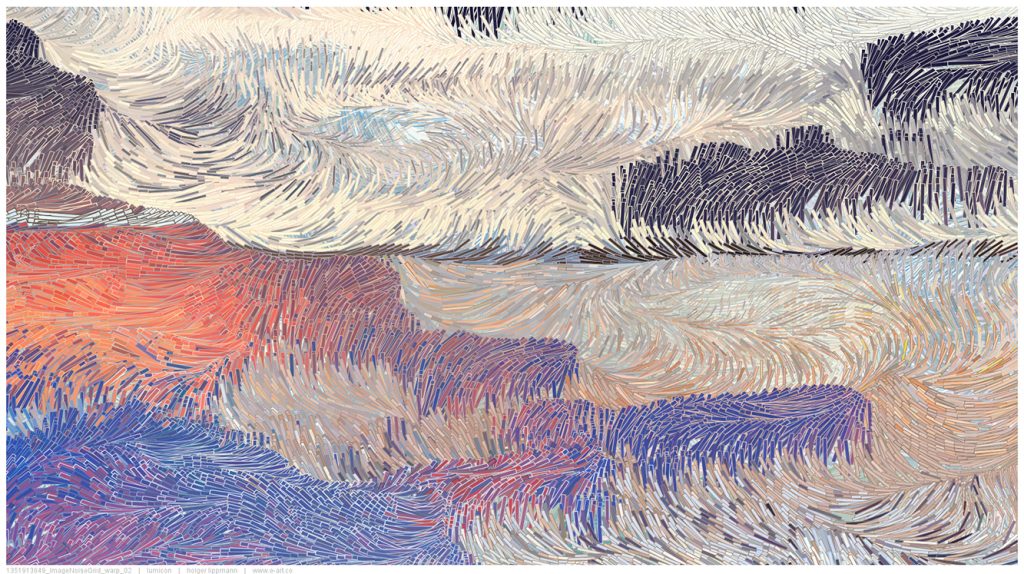
One generative art that I find inspiring is the “noise warp” series by Holger Lippmann. Using processing, Lippmann created his art by using a 2D X/Y noise structure that elongated shapes to produce brushstrokes. Lippmann was inspired heavily from the 20th-century artists who painted with expressive fluid brushstrokes. Even though his art was created through various long rectangles, they flow well and create fluidity. Through his code and noise, he was able to imitate that way of painting with various landscape photos he had taken himself. His generative art reminds me heavily of Van Gogh and Monet, but with Monet, the lines are more fluid. It distorts the reality of the landscape yet creates a beautiful fluidity of colors. I find this series very tranquil and pleasing to the eye, almost as if looking at his art in a dream state.
Holger Lippmann: http://www.lumicon.de/wp/?p=3623
![[OLD FALL 2020] 15-104 • Introduction to Computing for Creative Practice](../../../../wp-content/uploads/2021/09/stop-banner.png)




